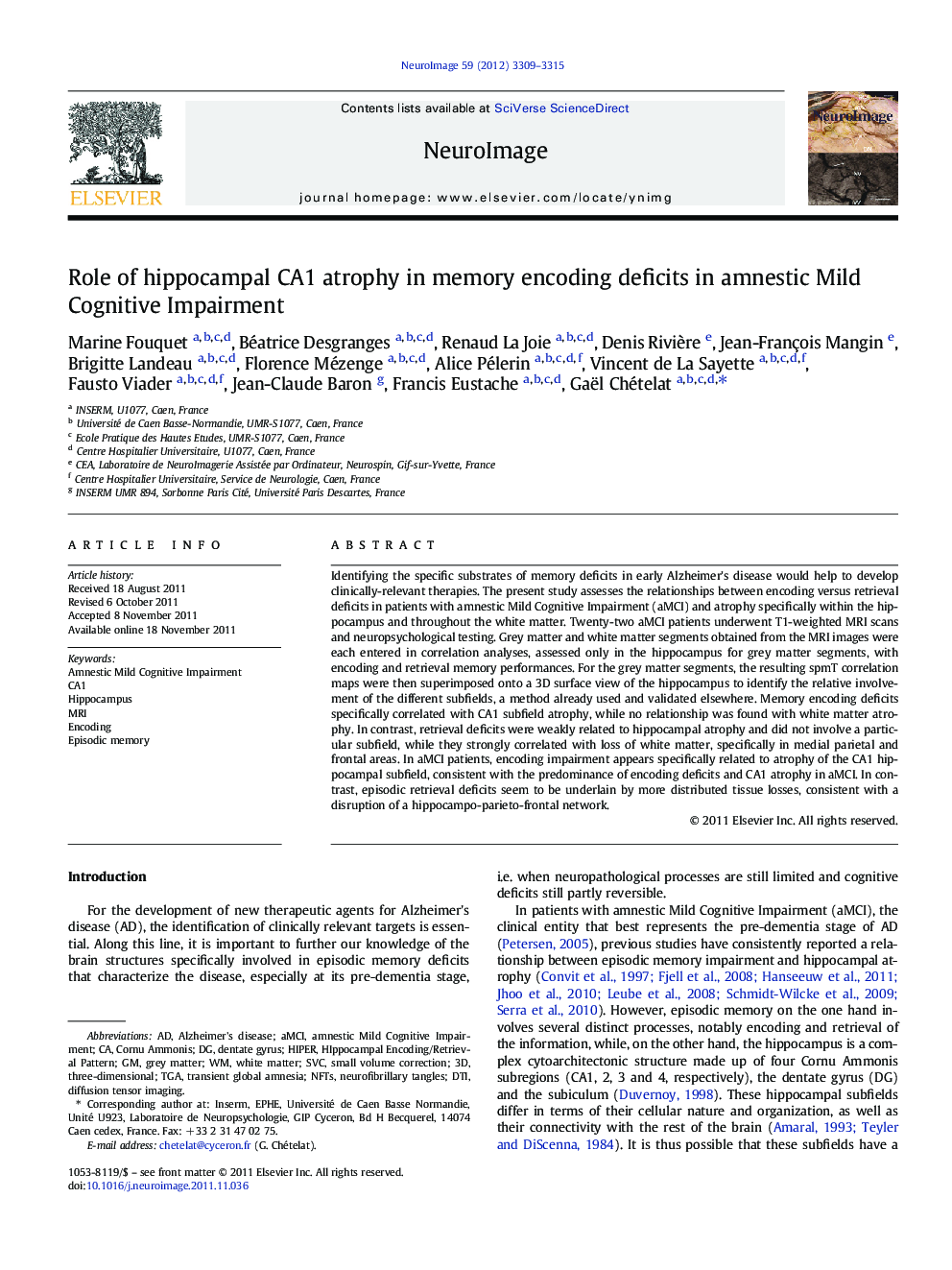| Article ID | Journal | Published Year | Pages | File Type |
|---|---|---|---|---|
| 6032666 | NeuroImage | 2012 | 7 Pages |
Abstract
Identifying the specific substrates of memory deficits in early Alzheimer's disease would help to develop clinically-relevant therapies. The present study assesses the relationships between encoding versus retrieval deficits in patients with amnestic Mild Cognitive Impairment (aMCI) and atrophy specifically within the hippocampus and throughout the white matter. Twenty-two aMCI patients underwent T1-weighted MRI scans and neuropsychological testing. Grey matter and white matter segments obtained from the MRI images were each entered in correlation analyses, assessed only in the hippocampus for grey matter segments, with encoding and retrieval memory performances. For the grey matter segments, the resulting spmT correlation maps were then superimposed onto a 3D surface view of the hippocampus to identify the relative involvement of the different subfields, a method already used and validated elsewhere. Memory encoding deficits specifically correlated with CA1 subfield atrophy, while no relationship was found with white matter atrophy. In contrast, retrieval deficits were weakly related to hippocampal atrophy and did not involve a particular subfield, while they strongly correlated with loss of white matter, specifically in medial parietal and frontal areas. In aMCI patients, encoding impairment appears specifically related to atrophy of the CA1 hippocampal subfield, consistent with the predominance of encoding deficits and CA1 atrophy in aMCI. In contrast, episodic retrieval deficits seem to be underlain by more distributed tissue losses, consistent with a disruption of a hippocampo-parieto-frontal network.
Keywords
Related Topics
Life Sciences
Neuroscience
Cognitive Neuroscience
Authors
Marine Fouquet, Béatrice Desgranges, Renaud La Joie, Denis Rivière, Jean-François Mangin, Brigitte Landeau, Florence Mézenge, Alice Pélerin, Vincent de La Sayette, Fausto Viader, Jean-Claude Baron, Francis Eustache, Gaël Chételat,
